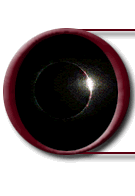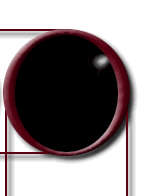|
Note -- you have reached the original astrophotographs.com website. Thanks very much for visiting. Logo contact information has been updated (i.e. we moved to Taos, NM) as below:
Willis Greiner
12 Rabbit Valley Road / P.O. Box 1515
El Prado, NM 87529
303-903-8996 or 575-758-3670
taosastronomer@gmail.com
You may also want to visit Willis' new astronomy site at: taosastronomer.com/
"Darkness
in the Caribbean"
Having scouted the island several times during the week, Cheryl
and I set out early AM (02:30 local Atlantic Time -- one zone
east of Eastern Time, this local anomaly something my "Starry
Night Deluxe" astronomy computer program is not aware of!)
in our upgraded Toyota "Corona" (we had a good feeling on
this random rental assignment) to Boca Tabla, a sort of national
park on the trade-wind swept northwest edge of the southernmost
Caribbean island, Curacao. It is located perhaps only thirty
miles from Venezuela, at latitude 12 degrees north. We had
noted previously the existence of a lockable gate; however,
we had never seen it even closed, and no rules or closing
times were noted anywhere at the entrance. Upon entering under
the open bar (whew!) we were greeted by an official with a
headlamp:
"Why are you here?"
"To observe the Eclipse -- I like to set up at night."
"Do you have a badge?"
"No, I'm here to do important scientific research." (gesturing
to the jumble of cameras, electronics, and large telescope
in the back seat)
"You don't have a badge; that's a problem."
(waiting, smiling)
(sighing) "OK, go ahead."
(relieved) "Thanks!"
| I
think to myself how fortunate we are to observe this,
and how lucky we are to live on a planet that allows such
an almost spiritual alignment. |
A note
here. The folks of Curacao are almost all the descendants
of black African slaves. The island possesses a long commercial
history, mostly stemming from its location below the hurricane
belt and just above South America. Its huge harbor (you can
turn a modern aircraft carrier around in it!) was used both
militarily and commercially, the latter use eventually prevailing
along with the Dutch, who were in the slave-trading business.
Interestingly, the above-mentioned descendants, most of whom
are well-educated (all speaking three languages, many individuals
four!) appear to hold no old leftover angers; the island is
socially very calm and friendly. Our experience with the guard
at the gate, I believe, reflects the sort of tolerance that
exists in this wonderful place.
We proceed up the dirt road and continue to our preselected
site, among the cactus and divi-divi thorn bushes. We wish
to set up behind a small natural shield to protect from the
constant trade winds of this southerly latitude. It is a place
not of palm trees and tropical rain forests, but of sand,
cactus and desert Iguanas. The open plain we're set up near
could hold, honestly, all the residents and visitors to the
island. It is a windswept arid location, not unlike Baja California
and the Sonoran Desert. It has not rained for one full year.
For me, there almost seems to be a bit of closure here, having
previously visited in Mexico "The Big One" (the moniker attached
to the spectacular 1991 Total Solar Eclipse) as well as experiencing
the "Black Sun" from a similar bleak and desolate location
midwinter in Wolf Point, Montana. (There, however, it was
well below zero -- here it's shorts and tee shirt weather.)
We stop the Corona, unload, and begin to set up. It is advisable
to configure the telescope to Celestial north, thereby allowing
included clock motors to "follow" the movement of
the Earth. Such a configuration allows for full concentration
on observing, and does not necessitate re-aiming of the optics
during the eclipse. A small portable battery arrangement powers
the equipment. The North Star Polaris, however, is barely
12 degrees above the horizon, and the instrument's fork mount
only drops to perhaps 15 degrees -- a rock platform is hastily
designed to accommodate the "defective" equipment. Looking
south, the fabulous Southern Cross and attendant stars Alpha
and Beta Centauri shine bright. I point nearby to Omega Centauri;
we are greeted to a fine telescopic view of certainly the
most spectacular globular cluster in all the skies. It is
now beginning to get light and cloudy; we retire on the hotel's
"borrowed" bedding -- "camping" here is decidedly
easier than in our native Rocky Mountains.
About 8 AM, and we stir. No crowds here, just one astronomer
visible at perhaps 200 yards, and nearer the sea. "That site
seems a bit windy," I suggest, but no matter. Once again,
we've been able to obtain the sense of privacy I feel is necessary
to experience such a spiritual set of events. The day progresses,
and we take small side hikes to the sea, about 300 yards to
our north. Cheryl discovers a beautiful little cove replete
with beach, marine Iguanas, sea eagles and no people. Wonderful!
Sometime past noon the partial phases of the eclipse begin.
I always use this time to set and reset the cameras. One Pentax
is on the back of the motor-driven 8 inch C-8 telescope at
f/6.3 and one is on a typical tripod equipped with an 85mm
lens at f/2.8. The cameras are loaded with Kodak Pro ASA 100
color negative film. My hope is to obtain close-ups of Baily's
Beads and the Diamond Ring with the telescope, and the eclipse
with attendant planets Mercury and Jupiter with the 85mm setup.
As a reference I used the exceptional "Starry Night Deluxe"
Mac program back home to produce both a mockup of the eclipsed
sky, as well as the previous night sky. One note here; my
C-8 is decades old (it reads "Celestron-Pacific", a name no
longer in use) and as such does not possess sufficient back-focus
to be used with the f/6.3 corrector and standard rigid camera
adapter attached to my (also) decades old Pentax cameras.
I heartily recommend pre-testing this type of setup before
any serious work (like traveling across the world with the
telescope!) -- the problem was easily corrected in Colorado
by cutting down the adapter and re-machining the threads.
Newer telescope models apparently possess the back-focus necessary
to accomplish this need -- I suppose the initial designers
never imagined the plethora of accessories we now demand to
put on the business end of these scopes -- specifically, flip
mirrors, CCDs, correctors, etc. The list seems endless.
I am getting
particularly nervous as totality approaches. My wife Cheryl
(her first eclipse) is very interested in the partial phases,
and we both note the dimming of the landscape and the cooler
temperatures. By now it's perfectly clear, and the wind surprisingly
has ceased. We attempt to observe the elusive Shadow Bands
-- a kind of wavy phenomena not unlike the watery shadows
seen in a swimming pool and so obvious in Mexico in 1991 --
viewed there on the hotel's linen placed neatly on the sand,
but here no go. I soon strongly indicate to Cheryl to stop
looking at the sheet, as totality is now imminent. A beautiful
Diamond Ring appears as I unfilter the scope and shoot photos
at 1/1000 of a second. Now Baily's Beads appear (much more
obvious and long-lived than in 1991), also shot at 1/1000.
I stay at the scope for a while (perhaps one minute, now shooting
at 1/60, and bracketing upward to 1/250). The field of view
at f/6.3 just allows room for the Sun and inner Corona, so
the outer Corona will hopefully be recorded with the standard
camera and tripod. I move to it, and Cheryl to the telescope.
Small but impressive scarlet Prominences are visible through
the telescope. I shoot the Sun and magnificent planets Mercury
and Jupiter (obvious along with Venus and Mars farther out
from the Sun), and then just look up. It is a splendid sight
-- the "Black Sun" and attendant planets -- and the yellow-orange
360 degree "sunset" set against this spectacular desert landscape.
The Corona displays a small shape (less than one solar diameter
in radius width, but reflects the Sun's magnetic poles clearly).
I think to myself how fortunate we are to observe this, and
how lucky we are to live on a planet that allows such an almost
spiritual alignment. As before in 1991, I struggle to hold
back the upwelling of tears. It is truly SO beautiful. I'm
in a daze as I slowly move back to the telescope, the Sun
apparently now locked permanently in eclipse, and time almost
seeming to stop. But we know better. Totality here lasts just
over three minutes. The yellow Sun begins to emerge, so I
hastily focus and shoot two more photographs at 1/1000 to
hopefully record additional Beads and Ring effects. I replace
the "Solar-Skreen" filter over the telescope's objective
as the landscape lightens up and the totality ends. This is
always a time of reflection and perhaps of some depression.
I too want the eclipse to start again, as my sons so eloquently
noted in 1991. Cheryl expresses the same feeling today.
I know I should photographically record the partial phases
after totality but my heart's not in it. Cheryl suggests instead
a luncheon on that deserted beach so we secure the equipment,
turn off the motor drive and head for the cove. We picnic
with the sea eagles and marine Iguanas and some crabs, and
watch as the violent surf carves caverns of time out of the
fossil coral cliffs surrounding us. As we meander back to
the scope and car the partial phases end, and all seems as
it was just hours before. WE are changed however, as we have
had the privilege to experience perhaps nature's greatest
event, a Total Eclipse of the Sun.
|






















